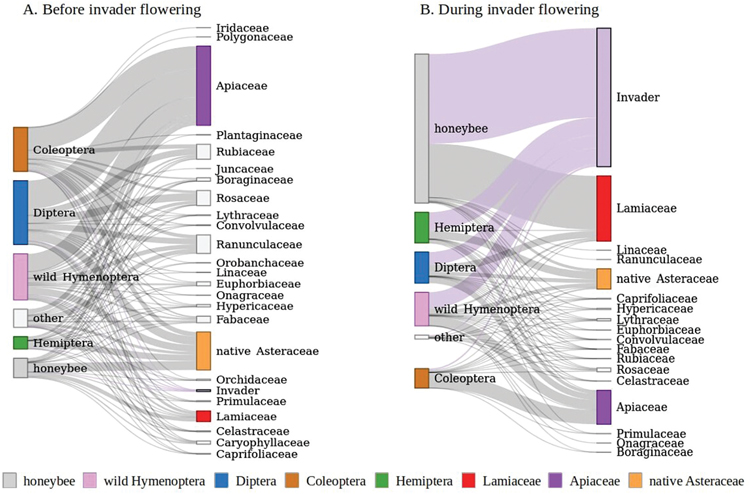Plant-pollinator interactions are key components of ecosystem functioning and are therefore increasingly studied. Of all the approaches used to estimate these interactions, the capture of pollinators along transects is a widely used and recognized method. However, specific choices of sampling design can strongly influence observations of insect visits and bias ecological interpretations. Yet, there is no agreement on the best transect design. Sampling intensity
(number and length of transects) is an important element of these choices, but not the only one. Here we investigate the influence of three other facets of protocol choices that commonly arise when designing pollination transects: (i) the influence of sampling conditions that may interact with ecological variables of interest or bias observations, (ii) the measurement of floral availability frequency, and (iii) the management of insects observed but not captured. We quantified the importance of these three protocol choices using a large dataset of 720 plantpollinator transects in protected wet meadows in France. Our results demonstrate the need to (i) cover a wide range of temporal and meteorological conditions for each site, and (ii) repeat the assessment of plot attractiveness for pollinators (a major covariate, usually simply derived from one-off vegetation surveys). In addition, we show that (iii) for analyses of visitation density among insect groups, failed insect captures should not be discarded but incorporated into the analyses. Overall, this research identifies three key choices in transect design and highlights
their influence in our understanding of plant-pollinator interactions.
Grange et al (2021) Designing sampling protocols for plant- pollinator interactions - timing,meteorology, flowering variations and failed captures matter. Botany Letters, 168:3, 324-332


